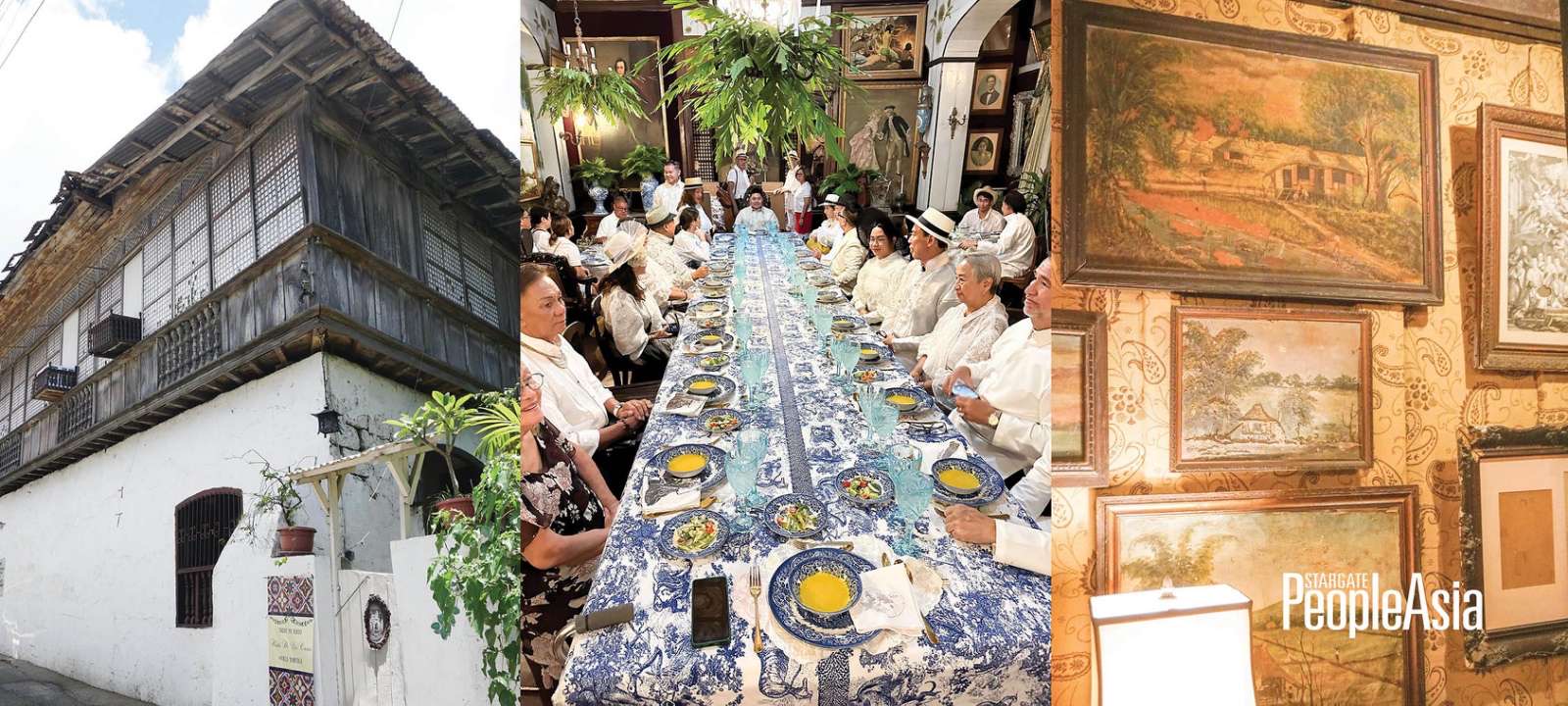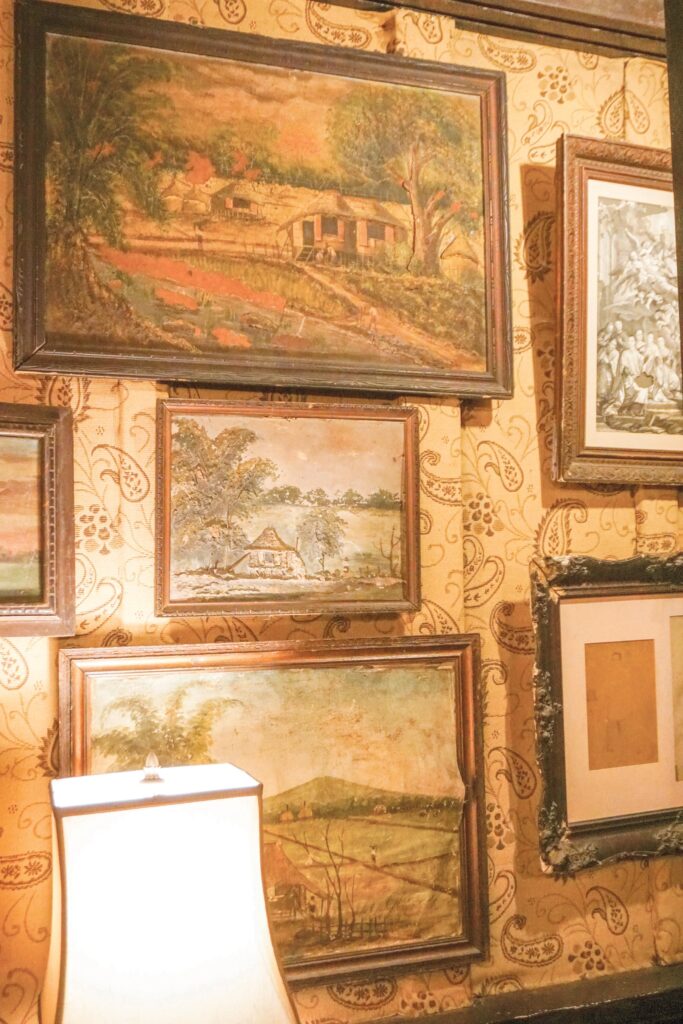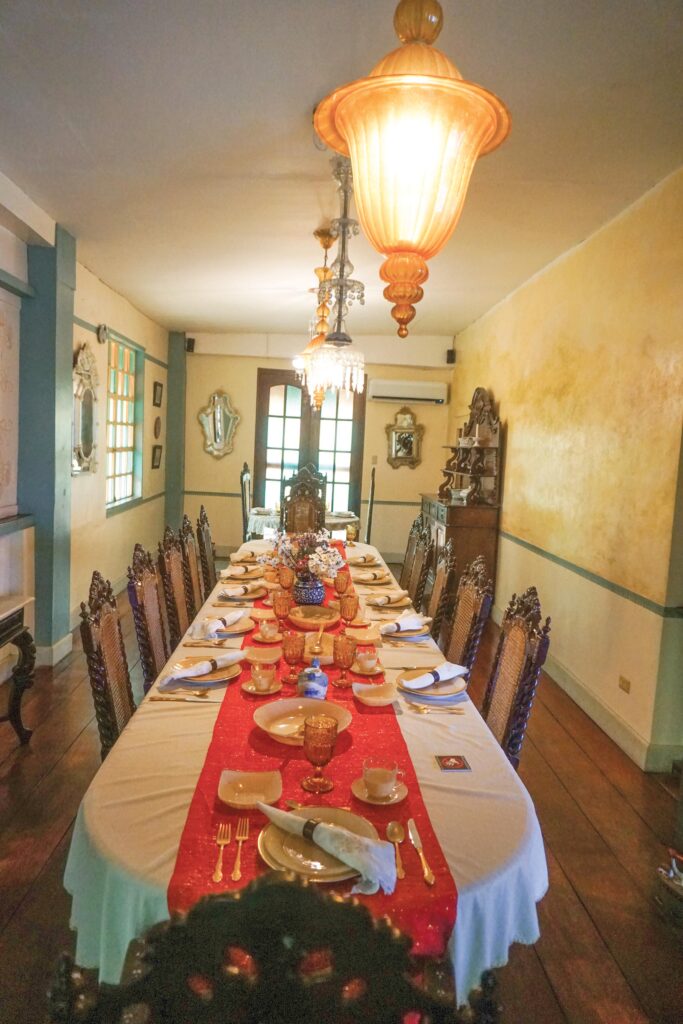Owners of these colonial-era houses, or what were commonly called back then as mga bahay na bato, also belonged to the country’s elite. Although they led fairly comfortable lives, many of them still yearned for freedom from the yoke of Spanish oppression. Teeming with ideas from an emerging world order, not a few chose to use their wealth and influence to advance the cause of Philippine independence. They may have left the world, but their grand houses remain, silent witnesses to their patriotism and reminders of the country’s rich storied past.
By Alex Y. Vergara
Photos by Ericson A. Castro
You don’t call Taal “Vigan of the South” for nothing. And like Vigan, which has since become a city, the historic town of Taal was also founded by the Spaniards in 1572. And while Taal might appear as if it’s borrowing from the allure of its sister destination in the north by allowing itself to be described as such, it can definitely stand on its own as a heritage town.
Its collection of Spanish colonial-era structures, including Asia’s biggest Catholic church — the Basilica of St. Martin of Tours, which, despite the passage of time, have remained intact to this day, are silent witnesses to countless events, movements, upheavals, schemes and dreams of not a few Filipinos who were yearning to see and live in a free Philippines in the late 1800s.

To mark the town’s annual El Pasubat Festival, an acronym which stands for empanada, longanisa, panutsa, suman, barong, balisong, tapa, tawilis, tamalis and tsokolate — some of Taal’s world-famous products — a number of Taaleño families and organizations, including famous transients like costume designer Lito Perez, the man behind the late 19th-century party place dubbed Villa Tortuga, recently opened their heritage homes and establishments to the public for free.
While some of these houses still belong to descendants of their original owners, a good number have been sold and resold to new owners, who, fortunately enough, have the means to maintain them while being mindful of their historical and cultural significance. Some, like Lito, are renting these old houses and have found adaptive reuses for them without completely altering their essence and aesthetics.

Villa Tortuga, in case you haven’t been, has become a must-go-to destination in Taal for local and foreign tourists alike wanting to experience a slice of life back in the day. Clad in period costumes, which visitors may borrow from Lito’s ever-growing collection, guests can have their pictures taken in one of the heritage house’s many rooms and even enjoy a 19th century-inspired Filipino lunch or dinner prepared by resident cooks.
Taal’s foremost day attraction
Long before the pandemic hit, Lito positioned Villa Tortuga as a bed-and-breakfast place. These days though, it has become a day attraction, which, on certain days, also stages morning and evening musical revues featuring some of the province’s global-caliber performers singing and dancing in period costumes to Kundiman, OPM and Broadway staples.
We were treated to two such shows, just before lunch and another one just before dinner, at Villa Tortuga’s silong (first floor), which Lito and his team have converted into a mini theater. At the expense of authenticity, but to everyone’s welcome relief, he had nearly the entire villa, including its theater, air-conditioned to make the virtual journey back in time more comfortable and appealing to guests.
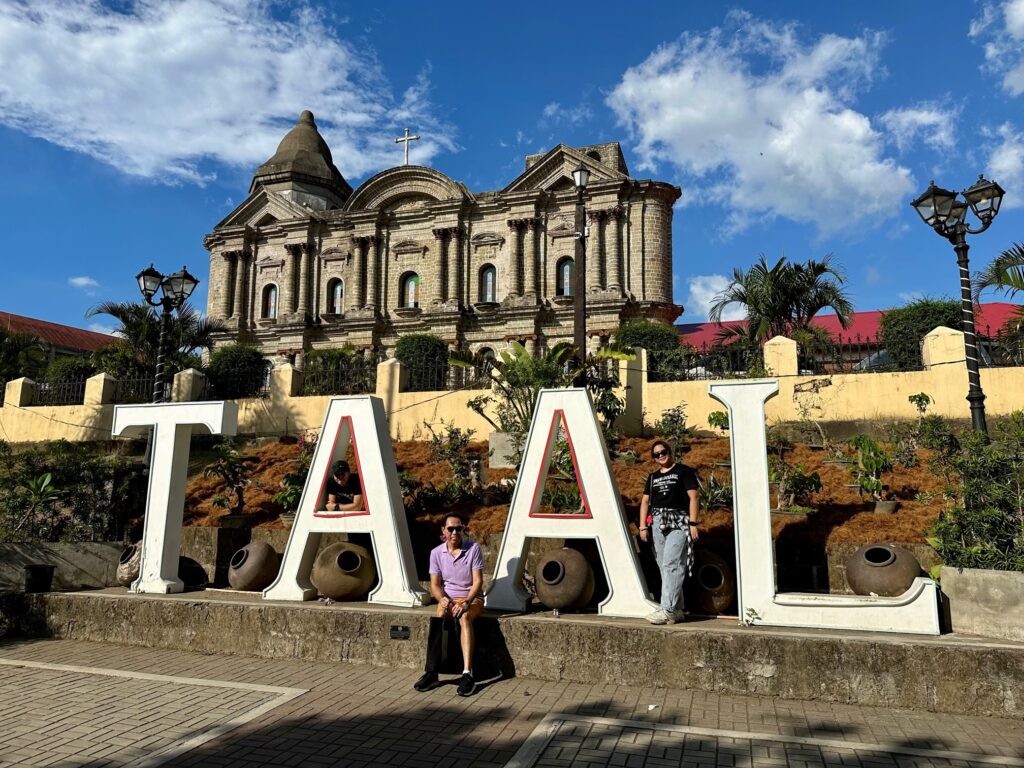
“If visitors want to stay overnight, I can recommend a number of places they could spend the night in,” he says. Lito’s good friend Rogie Reyes, for instance, is one of the people behind Casa Vicente Noble, one of Taal’s more popular bed-and-breakfast places.
Over the years, Lito has also reimagined his vision for Villa Tortuga, from a purely vintage Filipino dwelling containing mostly of-the-period pieces normally found in affluent homes back then to a house with a more eclectic flavor that’s more Downton Abbey meets the Gilded Age.
“Villa Tortuga may be a heritage house, but I’d like to call it a historic design house,” he explains. “And since travel back then was reserved for the very rich, I imagine its owners as a well-traveled couple who had amassed quite a collection of rare and presumably expensive finds that are now displayed in the house.”
For a relatively small town of 42 barangays and a population of 60,000, Taal is punching way above its weight in terms of cultural and historical importance. To keep it so, its municipal government, says local tour guide Art Mojica, has banned the entry of fast food chains and huge air-conditioned malls within its borders.
“If people want to go to a mall or eat, say, at a Jollibee,” says Art in a mix of Filipino and English, “they would have to go to the nearest adjacent town, which is Lemery. Sorry, there are no malls and fast food places here.”
Art also points out the fact that although Taal shares its name with one of the country’s deadliest and most active volcanoes, other towns and cities in Batangas are, in fact, nearer to the volcano than its namesake town.
“You can see Taal Volcano from Tagaytay, but you can’t see it from here,” he says. “Some people, especially after Taal erupted in 2020, were afraid to go here. What they don’t know is the town is not that near to the volcano.”

Back in time
It’s like stepping back in time, as Art regales us with facts, trivia, humor and even rumors, as we visit four of the 16 houses that brought out their welcome mats for both visitors and townmates alike raring to discover and rediscover facets about the once prosperous town. This small, seemingly insignificant town made a killing for a good number of years sometime in the late 19th century when a mysterious disease afflicted vast tracts of coffee plantations from Cuba to Colombia, Indonesia to India.
“For some strange reason, coffee plantations in the Philippines, particularly those in Batangas, were spared,” says Art. “As a result, families, many of them living here in Taal, whose lands were planted to coffee, soon became wealthy.”
And thanks to the town’s proximity to Balayan Bay, ships from almost every corner of the globe came to this part of the country to buy coffee, Art continues, as he points to the gleaming bay nearby, which can be seen from certain vantage points outside Casa Villavicencio, one of the houses we were privileged to visit, and its younger twin structure simply dubbed as the “Wedding Gift House.”
Once the property of Don Eulalio and Doña Gliceria Villavicencio, the house later doubled as a safehouse where revolutionary arms and ammunition were secretly stored right under the very noses of Spanish authorities. Eulalio even once sailed to Hong Kong, says Art, to personally hand over an P18,000 donation to Jose Rizal. The monetary instrument representing the then unheard of sum was written on the very desk that still exists and forms part of the house’s vintage furniture collection.
“If you adjust it to today’s cost of living, P18,000 is said to be equivalent to P4 million. Don Eulalio gave Rizal that amount because our hero needed money to publish his two novels — Noli Me Tangere and El Filibusterismo,” says Art.
Eventually charged with sedition, Don Eulalio was jailed by the Spaniards in Manila. But this didn’t stop his feisty and cunning wife Gliceria from helping the cause. Keeping her elegance and composure, she thought of ways, for instance, to distribute ammunition to the revolutionaries by hiding them in a carabao-drawn cart covered by raw, unshelled peanuts and ears of corn.
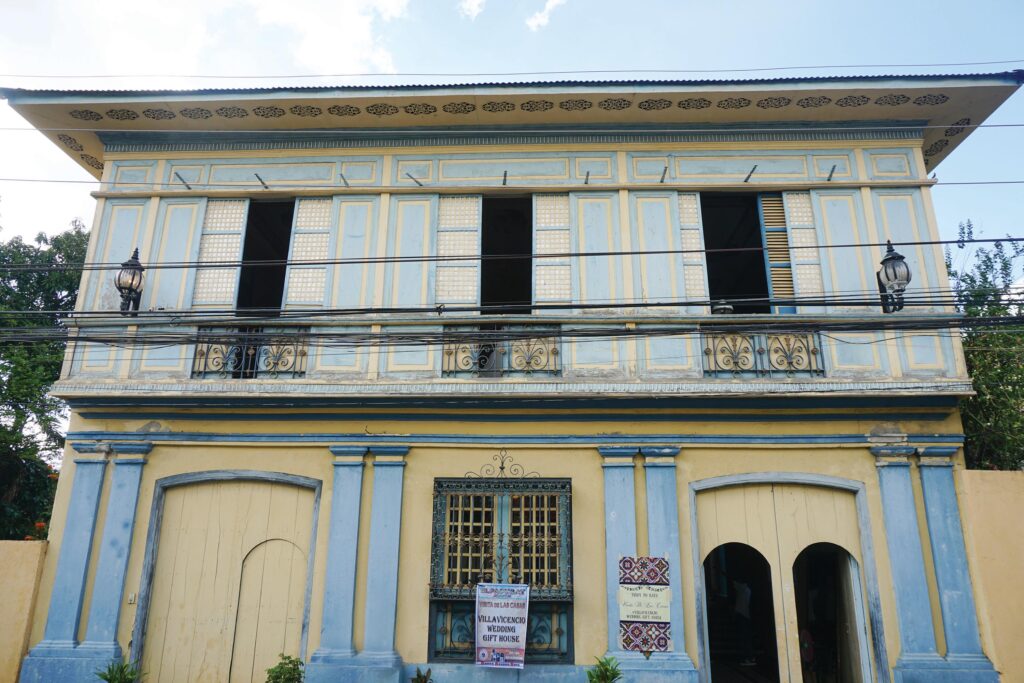

Frozen in time
Like most big houses during those days, the Villavicencio house comes with an antesala, a smaller living room that’s separated from the main living room, where visitors waited to be received. One of the entire living area’s focal points is its ceiling made of hand-embossed sheets of tin, which has remained surprisingly preserved to this day under layers of white paint.
In an adjacent lot stands the so-called “Wedding Gift House,” a nearly identical structure to the Villavicencio home, but constructed much later by one of Eulalio and Gliceria’s sons as his wedding gift to his wife. A part of the house was sequestered by authorities during the dying days of Spanish rule and used as a base to spy on the goings-on in the older house.
By then, Don Eulalio, after months of unlawful incarceration, had already died. His wife, unbowed by it all, continued to support the cause and was, in fact, says Art, secretly hosting meetings with revolutionaries hiding in plain sight from the Spaniards.
Long before basements became in fashion, the Villavicencio house already had its own secret underground room where Filipino patriots from Batangas and other parts of the country met. At some point, Andres Bonifacio and other stalwarts of the Katipunan were said to have joined them there.
“They passed one by one through here,” Art says, pointing to a small trap door hidden by an area rug on the wooden kitchen floor. “The Spanish authorities who were just stationed most of the time next door didn’t have a clue.”
These days, more than a century hence, the two Villavicencio houses still stand. The older of the two has been converted into a by-invitation only museum, while the newer one, in keeping with its name, is open by special arrangement as a venue for prenup and wedding photo shoots. Just imagine the untold stories they both hold, and those of other heritage houses in Taal, if only the four walls that support their roofs could speak.


